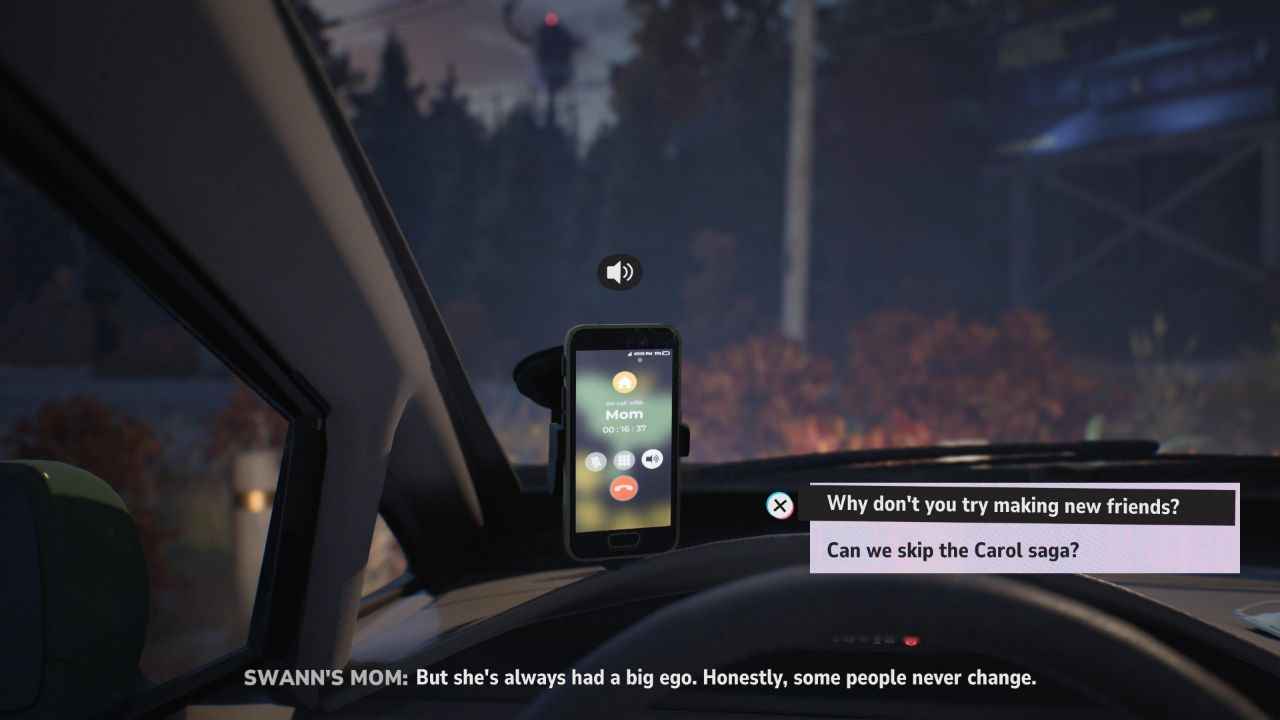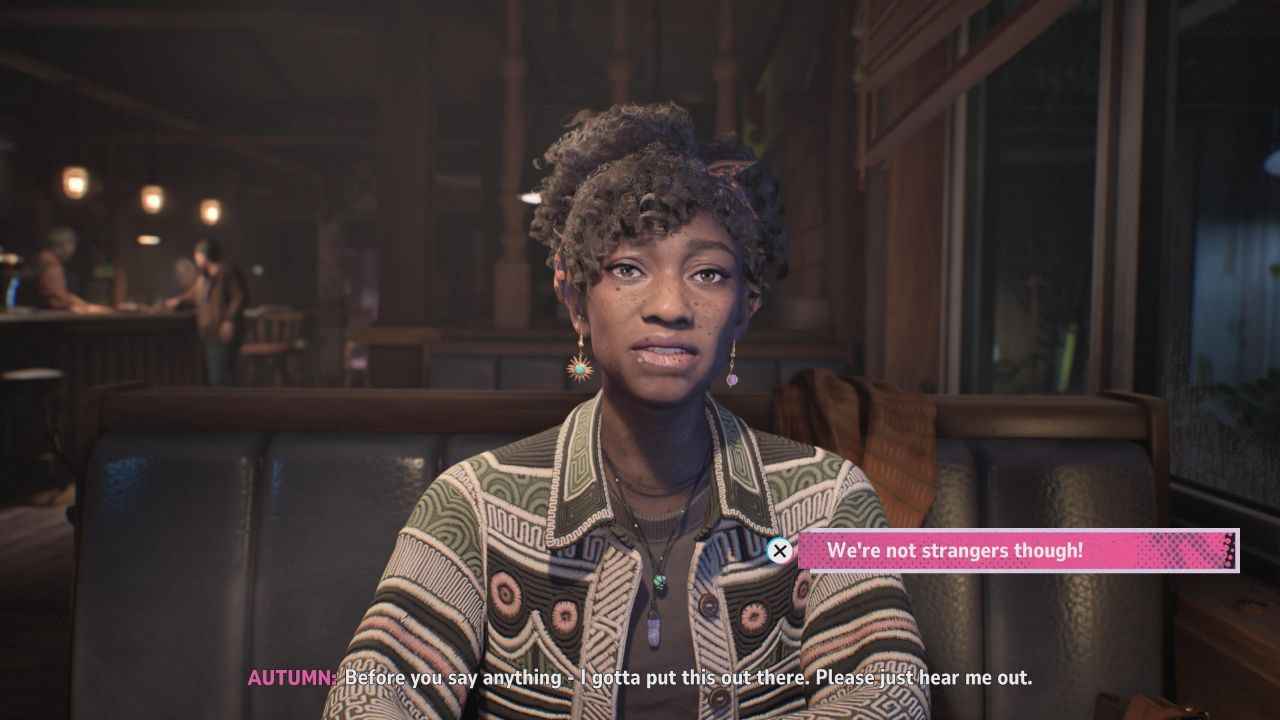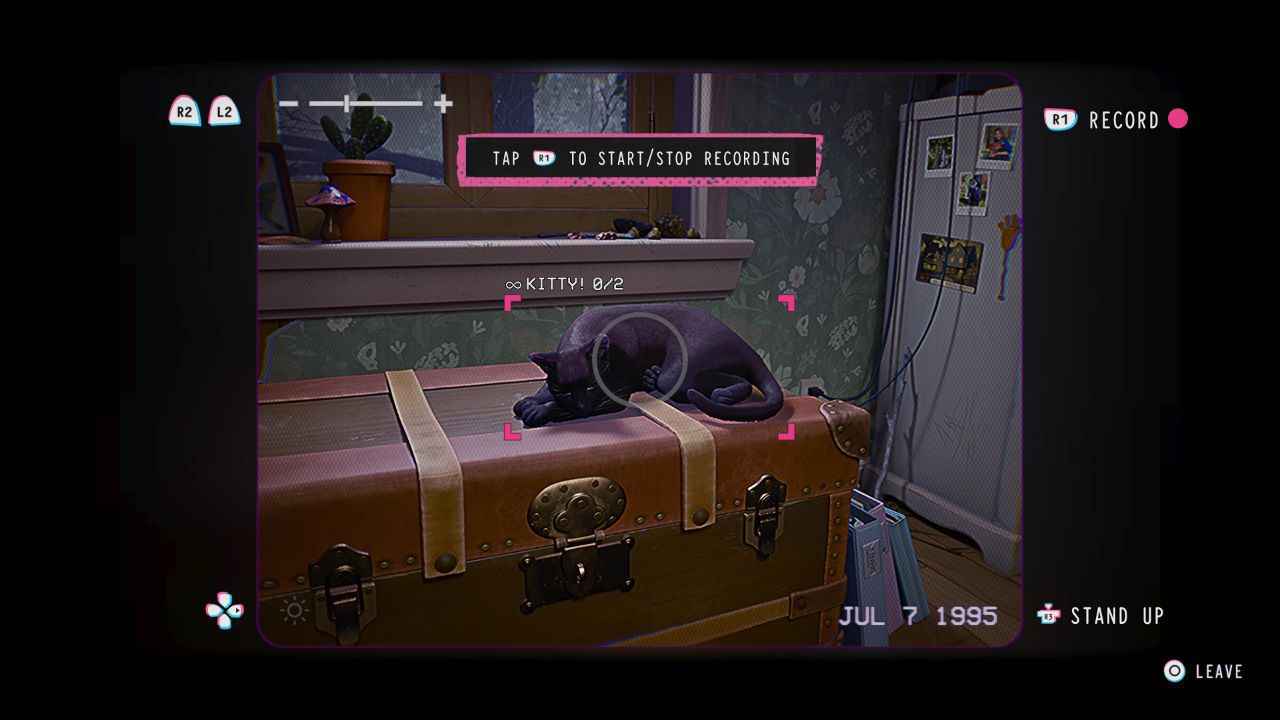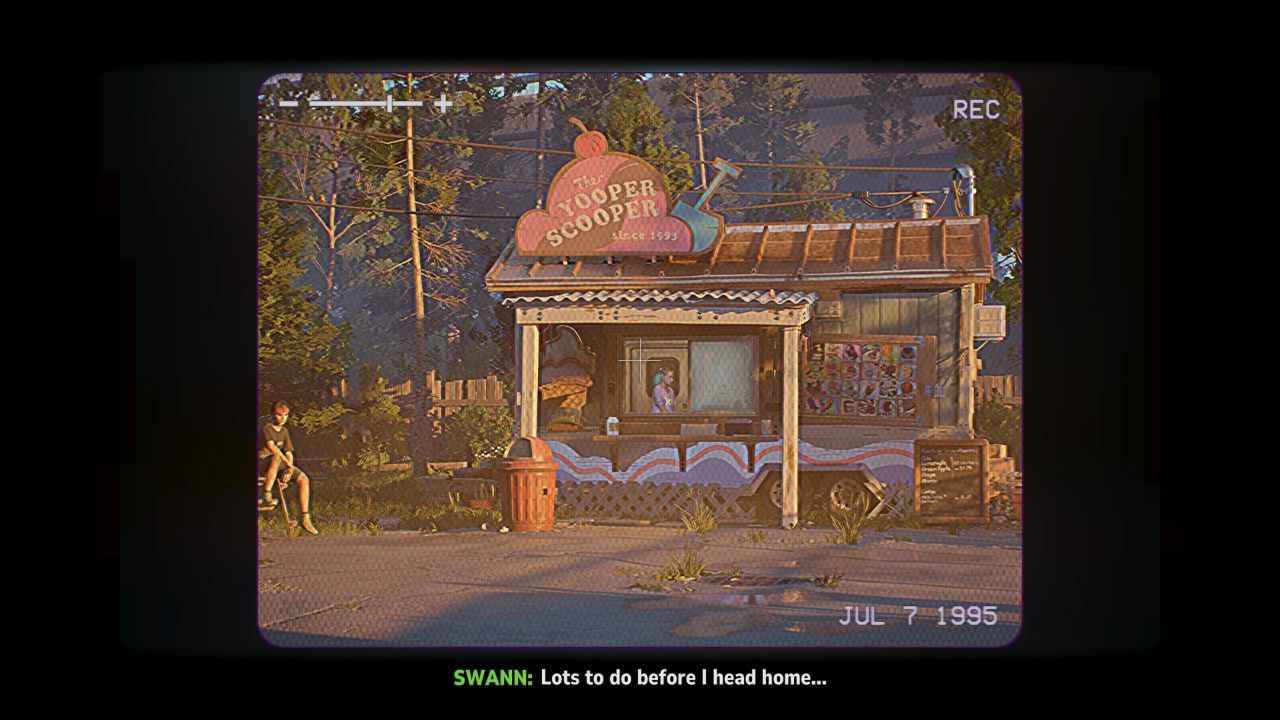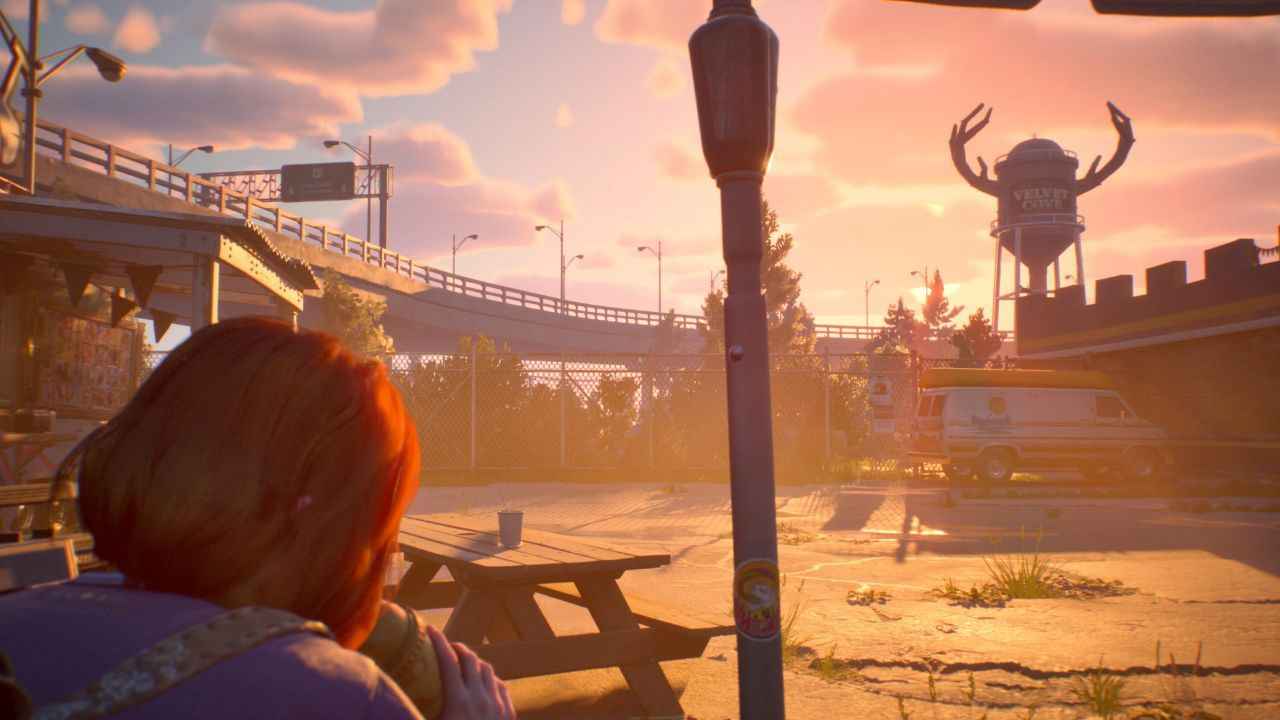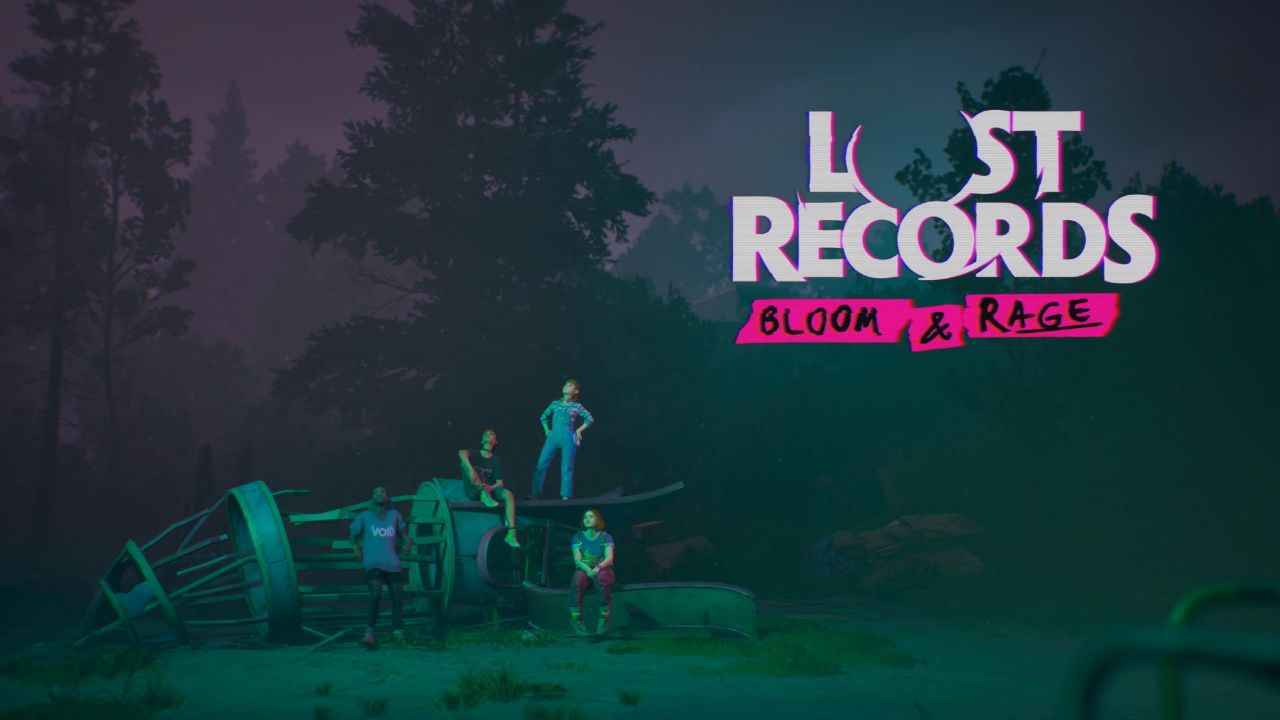Lost Records: Bloom & Rage Tape 1 PS5 Review. In more ways than one, Lost Records: Bloom & Rage is a return to roots for the team that pioneered the Life is Strange series. It’s immediately apparent that there is some shared DNA between those games and this one, and I couldn’t shake that feeling throughout the first episode (or “tape”) of this seminal new release.
It’s clear that DONTNOD intends to try and draw some of those players back into the fold with this new story and this is an effort that can be felt through every interaction, with some meaningful twists to help it stand out on its own.
Writing this review is very much centered in the moment, and will very much be a time capsule for what might be released in the next two months. As of this review, I have only played the first half of the game. And my thoughts of this half will very likely be influenced by the conclusion in just a couple of months. This first “tape” spends a lot of time setting up major plot threads that will undoubtedly be resolved in the second half, but that dedication to a slower pace hinders what should be a compelling mystery, muddying the result slightly in the long run.
In returning to the fabric of Life is Strange, it feels like the team never really left it. And that comes with its own baggage.
Lost Records: Bloom & Rage Tape 1 Review (PS5) – Just Like Returning Home
A Slow Burn
In an interesting twist of chronology, Lost Records takes place across two distinct periods in time, both interwoven and feeding into one another in interesting ways. Framed around “remembering the past”, you spend the majority of your time walking through episodes of a fateful Summer 27 years ago, slowly learning about how the main four characters came together and what brought them so close.
Over the course of this first tape, you’re introduced to the core dynamic in the group and the perspective of your main character, Swann. As opposed to taking control of all four characters, things are kept simple by controlling just the one character and seeing things from their perspective. This is true for the segments in the real world, where Swann slowly tries to reconnect with people that she hasn’t seen in nearly three decades.
There’s an uneasy balance between these two and the writing of such delicate topics is handled shockingly well. I think everyone can relate to the slightly uneasy tension when you’ve not seen someone in years, and I could feel that in the dialogue throughout. There’s a bittersweetness to the exchanges that kept me excited to see what would actually arise out of this reconnection.
Writing convincing and authentic dialogue is gold dust in the narrative adventure genre and it feels like we’ve hit a milestone here. Not many games tackle the challenge of having the same main cast across two distinct periods and it genuinely feels like that’s been nailed here. 27 years is a long time and that brings a lot of change; the degree of that change has been portrayed here very well and I enjoyed that a lot.
Stuck in the Past
Mechanically speaking, Lost Records: Bloom & Rage will feel incredibly familiar to fans of this genre. Slowly examining environments and uncovering details and flavour dialogue from the characters around you. It feels like a return to form and each area is full of small bits of story to uncover. Dynamic dialogue choices, dependent on environment and time, add to the sense of realism in your interactions across all three characters. You’re encouraged to pay attention and sometimes actually not speak.
One of the new wrinkles to this formula is the addition of Swann’s video camera; equipping this tool lets you shift perspectives to first-person and see the world through (quite literally) a new lens. Points of interest are highlighted for you to create your own short movies about, with specific items being grouped together into “memoirs” to look back on.
Taking the time to explore the environment and slowly piece your own home movies together adds to the sense of nostalgia and the sense that we can’t stay in the past forever. You’re encouraged to savour these quiet moments and just enjoy the mundane, instead of rushing to solve the mystery.
This is all well and good until Lost Records remembers that it needs to have some interactivity in order to qualify as a “game”; this is where Lost Records most shows similar cracks to the original Life is Strange games.
At several points, the group will come up against an arbitrary problem that demands an arbitrary sequence of events to unfold.
You’ll be left wandering around contained environments, inspecting each last tin can and abandoned note, trying to scrape for the one piece of key information you need to move on. I appreciate the excuse and freedom to explore, but I would rather do that of my own choice, rather than being thrown into a poorly signposted environmental puzzle. More than once, I was left idly walking around while characters puzzled by themselves, without much of a way to look for assistance.
These were mostly resolved within a few minutes but were the equivalent of slamming the handbrake while driving, with some truly baffling logic being used in places to substitute for engaging interaction. The infamous bottle hunt from the original Life is Strange immediately springs to mind and it saddens me that we still can’t seem to avoid the common pratfall of this genre.
This might feel even more pronounced here with the distinct lack of an “ability” to change the way you can interact with the environment with. Without anything like a time rewind, the complexity of these puzzles takes a necessary step back, only making them stand out even more against a pretty lowkey experience in gameplay.
The Devil is in the Details
When push comes to shove, judging Lost Records: Bloom and Rage purely on gameplay would be missing the forest for the trees; the real staying power here is found in the tapestry that has been created across Velvet Cove for players to discover.
The tape system ensures that you’ll be spending a lot of time just soaking in the atmosphere and appreciating the lengths that the developers have gone to in capturing the charmingly rustic town experience. I found myself thinking about the long summers I used to have as a kid, just mindlessly milling around and feeling like nothing would ever get in the way.
The line between realism and stylisation is one that the genre tends to struggle with and so I’m very happy with the result here. The time spent in the 90s is defined by a saturated colour palette with warm notes as you wander through the wilderness, where the present day is far colder and unwelcoming, reflecting the tension in the air as you relive those days.
A musical score full of atmospheric and wavey tracks seamlessly blends into the background to further make these moments feel like honeyed daydreams of a time gone by, compared to the stark quiet of the present day. Lost Records is a game of two halves and they compliment each other well.
Unfortunately, it’s these details that I can’t really get into for the sake of this review. Lost Records is a game best enjoyed knowing as little as possible and letting yourself soak in the atmosphere and the developing relationships of its characters.
I was pleasantly surprised by the direction this story took and never felt like it was living in the shadow of its predecessors, despite their similarities in structure. Supported by a convincing cast and solid performances across the board, I have a feeling that this game is going to age a lot more gracefully than others. Character dialogue feels natural; a clear effort has been made to try and accurately portray the teenager experience without feeling like adults are trying to appeal to kids.
The focus on a more intimate cast gives them more space to come into their own, and even extra characters feel far more well-rounded than I expected. There are subtleties and nuances that are easily glossed over that add more to the world of Velvet Cove and help it to feel like a lived-in place, with a history of its own.
Half of a Story
In another possible homage to the team’s roots, Lost Records has been split into two episodes with two months being put between them. The supposed reason for this is to maintain engagement and get the fanbase speculating about what could be coming next, but a part of me finds this to be worth a slight headshake.
Much of Tape 1 is spent expositing information that the player is intentionally kept from having until the narrative deems it relevant. I get that there needs to be a sense of mystery and intrigue, but I did feel like there were some strange moments where every character was circling the same drain without actually saying anything about their reunion.
It’s a small thing, but I could feel myself growing frustrated with how long in the tooth this setup felt. There are some fascinating moments here that will hopefully pay off in a couple of months, but those are just potential conclusions to a story that’s only been partially explored right now.
My worry is that Tape 1 spends just a little bit too long on introductions, putting pressure on Tape 2 to tie everything together into a satisfying conclusion, which is a tall ask for a game made only of two parts. So far, interesting concepts and dynamics have been laid on the table, but I can’t quite see where these will go.
So far, I’m certainly interested to see how this story ends.

